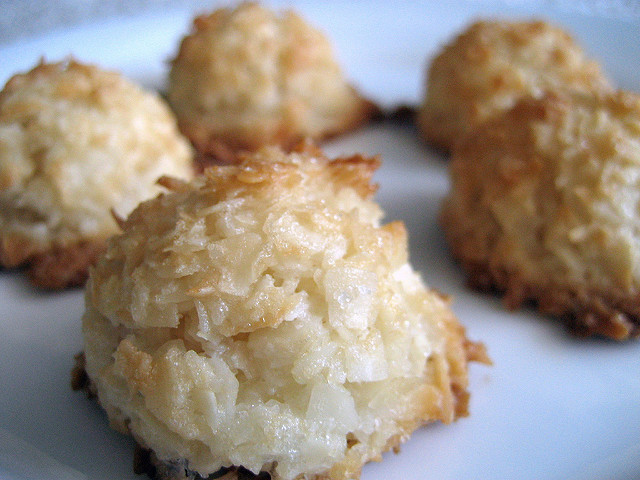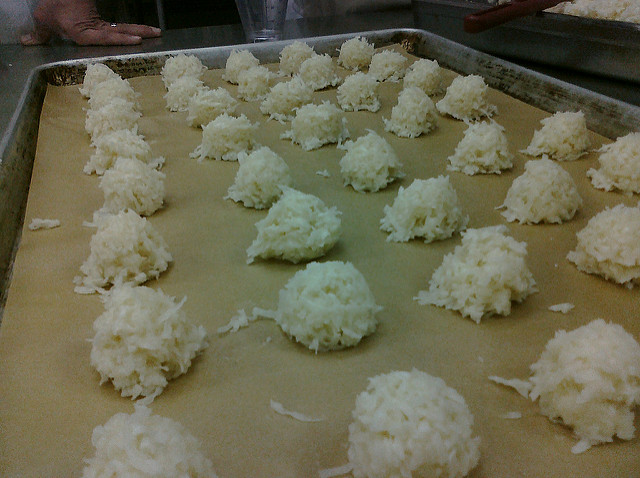The earliest recipe for macaroon cookies appears in Robert Smith’s Court Cookery, or the Complete English Cook, published in 1725. The name of the cookie comes from the Italian word maccarone, which means "paste" and refers to the almond paste that was originally the main ingredient. Over time, however, coconut was added to the ground almonds, and in some recipes in fact replaced them. The cookies are often enjoyed by Jewish families during Passover because they are made without leavening ingredients and wheat. Today coconut macaroons are probably the most well-known variety of macaroon in the United States.
Recipe Servings: 30
Prep Time
15 minutes
Cook Time
25 minutes
Total Time
40 minutes
Vegetarian
Vegan
Gluten Free
Dairy Free
Kosher
Halal
Ingredients
- 14 oz sweetened coconut flakes
- 1 cup sweetened condensed milk (actually slightly less than 1 cup, so just below the 1 cup line on measuring cup)
- 1 tsp vanilla extract
- 2 large egg whites, at room temperature
- ¼ tsp salt
- 4 oz dark chocolate (optional)
Directions
- Preheat the oven to 325°F. Line a large cookie sheet with parchment and set it aside.
- Stir together the coconut, condensed milk, and vanilla in a large bowl until well combined.
- Combine the egg whites and salt in a medium bowl. Beat using an electric mixer until stiff peaks form.
- Fold the egg whites into the coconut mixture until completely combined.
- Scoop the mixture into 1½ tablespoon-size balls and drop onto the prepared cookie sheet, placing them at least 1 inch apart.
- Bake for 20–23 minutes or until the tops are just beginning to turn golden-brown.
- Remove the cookies from the oven and let them cool completely before dipping them in chocolate (if desired).
- Chop chocolate into pieces and place them in a small microwave-safe bowl. Heat the chocolate in the microwave for 20 seconds at a time, stirring between until chocolate is smooth and completely melted.
- Dip the bottom of each macaroon into the chocolate and return it to the baking sheet. Let the chocolate harden before serving.
Recipe introduction and directions © Copyright 2016-2025 World Trade Press. All rights reserved.


